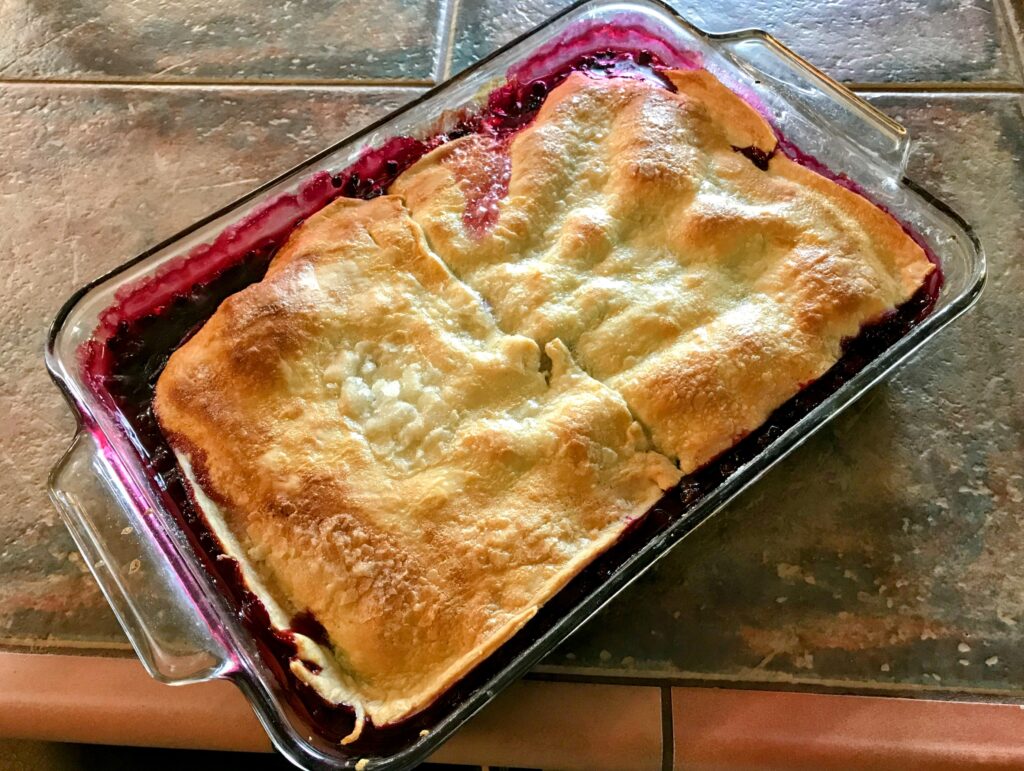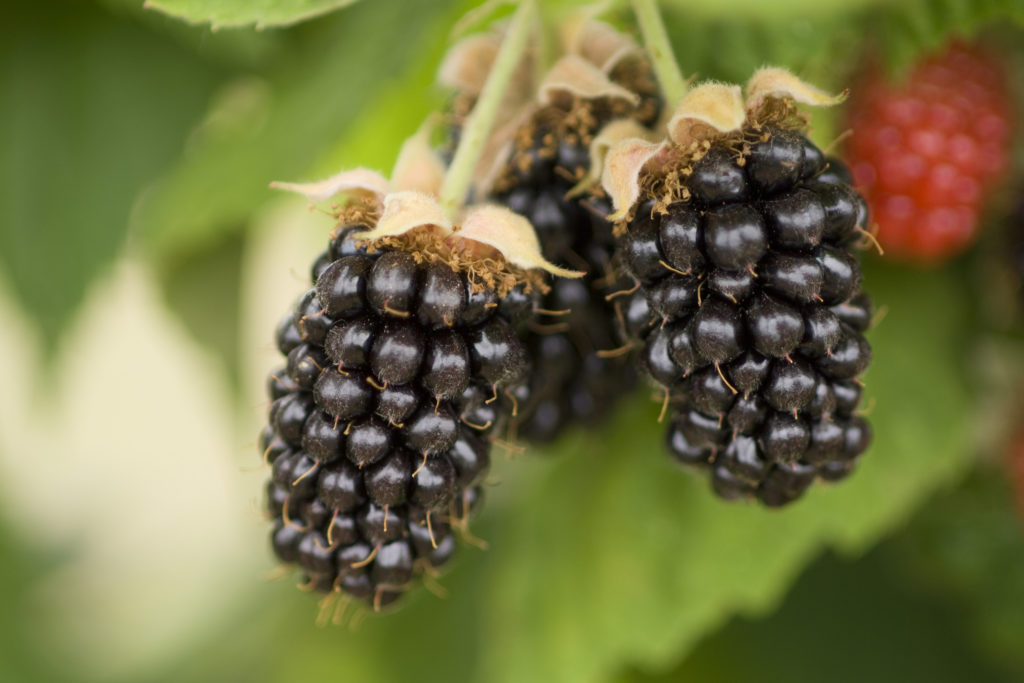
FOR THE CRUST:
2 cups flour
1 tablespoon granulated sugar
1 teaspoon salt
1/2 cup cold butter, diced
5 tablespoons shortening
4 tablespoons ice water
3 tablespoons freshly-squeezed lemon juice, divided
FOR THE FILLING:
1 cup plus 1 teaspoon granulated sugar, divided
2 tablespoons plus 2 teaspoons quick-cooking tapioca
1 tablespoon freshly-squeezed lemon juice
4 cups fresh marionberries (or blackberries)
1 8-ounce package Philadelphia cream cheese, softened
1/2 cup powdered sugar
1/2 teaspoon almond extract
1/2 teaspoon vanilla extract
1 tablespoon heavy whipping cream
Mix flour, sugar and salt together in a large bowl. Using two dinner knives, cut in the butter and shortening until crumbly. Gradually add ice water and 2 tablespoons of the lemon juice, tossing with a fork — just until the dough holds together when pressed. Divide dough in half; shape each half into a disk, cover each half with plastic wrap, and refrigerate 10 minutes.
While dough chills, mix together in a large bowl 1 cup of the sugar, all of the tapioca, and the remaining tablespoon of lemon juice. Add berries and toss very gently to coat; set aside 15 minutes.
Preheat oven to 425°. On a lightly-floured surface roll one piece of the chilled dough into a circle 1/8-inch thick; continue to chill the second piece of dough. Carefully transfer the rolled-out pastry to a 9-inch pie plate and trim to 1/2 inch beyond the rim of pie plate; set aside. In a small bowl beat together cream cheese, powdered sugar, almond and vanilla extracts. Spread mixture evenly over the prepared crust and cover with the berry mixture; set aside. Roll the remaining piece of dough into a second 1/8-inch-thick circle; cut it into 1/2-inch-wide strips. Arrange strips in a lattice pattern over the filling. Trim the ends, and seal strips to the edge of bottom crust; flute the edge as desired. Brush lattice strips lightly with cream and sprinkle remaining sugar over the top.
Bake 15 minutes, then reduce temperature to 350° — do not open the oven door. Bake 50-60 minutes longer, or until crust is golden brown and filling is bubbly. During the last 15 minutes of baking cover the pie edges with foil to prevent overbrowning. Cool pie on a wire rack before serving. — Serves 8

Oregon is known for its marionberries! Many people consider them “the perfect berry“ due to the fruit’s delicate balance between sweetness and acidity. Marionberries are the most common form of blackberry cultivated in Oregon, accounting for more than half of all blackberries produced in the state. The fertile slice of land about 70 miles inland between Eugene and Portland (known as Oregon’s Willamette Valley) provides a perfect microclimate for marionberries. The hybrid berry and its potential was first noted in 1945. Scientists and horticulturalists from the US Department of Agriculture and Oregon State University worked together to cross-breed the state’s Chehalem and Olallie blackberries, and the marionberry was tested (primarily in Oregon’s Marion County) until its official release in 1956.
Marionberries are medium-sized and conical in shape (more long than wide) and are dark purple to black in color. They have a tart, earthy sweetness which makes them perfect for eating fresh from local farms and markets — or made into delicious jams or preserves — or baked in delicious pies, tarts or cobblers. Marionberries complement savory meat dishes and also pair well with robust cheeses. Marionberry Pie was designated the official state pie of Oregon in July 2017.
Often marketed as “the Cabernet of Blackberries”, the marionberry’s powerful flavor dominates Oregon’s blackberry production. The state produces 28-33 million pounds of marionberries annually, and Marion County and the Willamette Valley produce more than 90% of current production. Marionberries are well-adapted to the Oregon’s mild maritime climate, mild rains, and warm summers. They ripen throughout late spring and early summer and are typically harvested between July 10 and August 10 each year. A single acre can produce up to six tons in a harvest.
Freshly-picked marionberries are available for only a short period of time each year, but their delicious flavor is definitely worth the wait!

Can’t wait to try all of these recipes
And I know you’ll give me some feedback when you do! Thanks, Kathy!
With these recipes I would rather eat at your house than go to a restaurant.